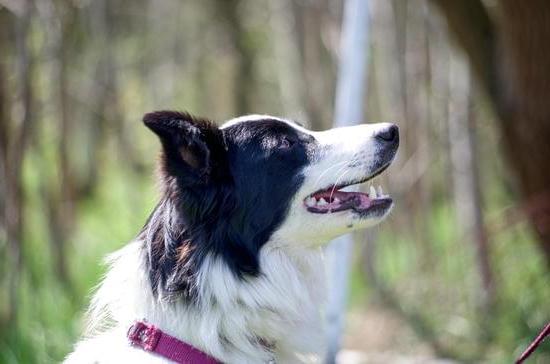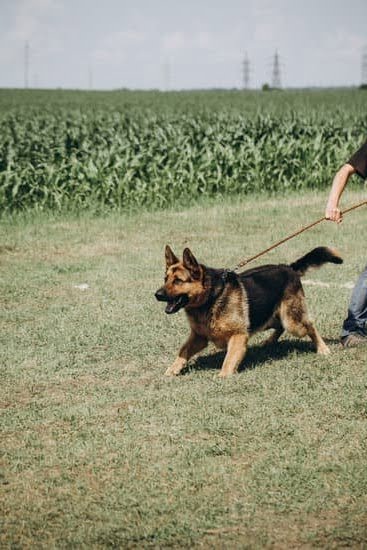Training your dog how to stay is a crucial aspect of obedience training. Whether you’re at the park or in your own home, having a dog that can stay on command is essential for their safety and the safety of others. Teaching your dog to stay can also help improve their focus and self-control, leading to better behavior overall.
In this article, we will delve into the importance of teaching your dog to stay and provide a comprehensive guide on how to effectively train your furry friend. From understanding the basic principles of training to troubleshooting common challenges, we’ll cover everything you need to know to successfully teach your dog to stay.
By following the step-by-step guide and avoiding common mistakes, you’ll be equipped with the tools and knowledge needed to reinforce the stay command in different environments. Additionally, we’ll provide tips for celebrating success and maintaining your dog’s ability to stay for the long haul. So, let’s get started on this journey towards a well-behaved and obedient canine companion.
The Basic Principles of Training Your Dog to Stay
Teaching your dog how to stay is an essential skill that can help keep your pet safe in various situations. Whether you’re at home, out for a walk, or visiting the dog park, having a reliable “stay” command can prevent your dog from getting into potentially dangerous situations. Additionally, teaching your dog to stay can also provide mental stimulation and improve their overall obedience.
Start With the Basics
Before teaching your dog how to stay, it’s crucial to ensure that they have mastered the basic commands such as sit, down, and come. These commands lay the groundwork for teaching your dog to stay and will make the training process much smoother. It’s important for your dog to have a strong understanding of these commands before moving on to more advanced skills.
Consistency Is Key
One of the basic principles of training your dog to stay is consistency. This means using the same verbal cue or hand signal each time you give the command. Consistency also applies to your expectations of when and where you want your dog to stay. Keep in mind that dogs thrive on routine and clear communication, so consistent training will help them understand what is expected of them.
Positive Reinforcement
Using positive reinforcement techniques such as treats, praise, and playtime can be highly effective in teaching your dog how to stay. When your dog successfully stays on command, reward them immediately with their favorite treat or toy. Positive reinforcement helps create a positive association with staying and encourages your dog to repeat the behavior in the future.
By understanding these basic principles of training your dog to stay, you’ll be better equipped to start the training process with confidence and set your furry friend up for success in learning this vital command.
Tools and Equipment Needed for Training
When it comes to training your dog how to stay, having the right tools and equipment can make a significant difference in the success of your training sessions. Here are some essential items you will need to effectively train your dog how to stay:
Leash and Collar
A sturdy leash and collar are essential for maintaining control over your dog during training sessions. Choose a leash that is comfortable for both you and your dog, and a collar that fits properly without being too tight or too loose.
Treats
High-value treats can be a powerful motivator for your dog during training. Use small, soft treats that are easy for your dog to consume quickly, so they can focus on the training rather than chewing.
Clicker
Using a clicker can help to mark the exact moment when your dog performs the desired behavior, making it easier for them to understand what they are being rewarded for.
Training Mat
Having a designated training mat or area can help your dog understand that they are in “work mode” during training sessions. This can provide structure and consistency, which is important for effective learning.
By ensuring you have these tools and equipment on hand before starting your training sessions, you can set yourself up for success in teaching your dog how to stay.
Remember that patience and consistency are key when it comes to training, so take the time to gather these items and set aside dedicated periods for focused training with your pup.
Step-by-Step Guide to Teaching Your Dog to Stay
Training your dog to stay is an essential skill that can ensure their safety and your peace of mind in various situations. Whether you want them to remain still while you open the door or wait for your command before crossing the street, teaching your dog how to stay requires patience, consistency, and positive reinforcement.
To effectively train your dog how to stay, follow these steps:
1. Start with the basics: Begin by teaching your dog other commands such as sit, stand, and come. This will establish a foundation of obedience and make it easier for them to understand the concept of staying in place.
2. Use positive reinforcement: Reward your dog with treats, praise, or toys when they successfully stay in place. Positive reinforcement will motivate them to continue obeying the stay command.
3. Start small: Begin training in a quiet and familiar environment with minimal distractions. As they become more proficient at staying, gradually introduce more challenging environments and distractions.
Additionally, consider these tips for successful training:
– Be patient and consistent: Rome wasn’t built in a day, and neither is a well-behaved dog. Consistently practice the stay command with your dog to reinforce their understanding.
– Avoid negative reinforcement: Punishing or scolding your dog for not staying can cause fear and confusion. Instead, focus on rewarding good behavior.
By following this step-by-step guide and being patient and consistent with your training, you can effectively teach your dog how to stay in various situations and environments. Remember that every dog learns at their own pace, so be sure to tailor your training approach to fit their individual needs.
Common Mistakes to Avoid When Training Your Dog to Stay
When training your dog how to stay, it’s important to be aware of some common mistakes that can hinder the learning process. By avoiding these pitfalls, you can ensure that your dog understands and follows the stay command effectively.
One common mistake is using the stay command inconsistently. It’s essential to use the same verbal cue and hand signal each time you give the command. Inconsistency can confuse your dog and make it harder for them to understand what is expected of them. Additionally, releasing your dog from the stay position too quickly can undermine their progress. Be patient and wait for a few seconds before releasing them, gradually increasing the duration as they become more proficient.
Another mistake to avoid is using punishment or harsh corrections when your dog doesn’t stay. This can create anxiety and fear in your pet, leading to resistance or reluctance to obey the command. Instead, focus on positive reinforcement by rewarding your dog with treats, praise, and affection when they successfully stay in place. This will help them associate staying with positive experiences and encourage them to comply willingly.
Additionally, failing to practice in different environments can impede your dog’s ability to stay in various situations. Dogs need consistent practice in different locations with varying distractions to generalize their understanding of the stay command. By practicing in new environments, you can reinforce their training and ensure that they respond reliably regardless of the circumstances.
| Common Mistakes | Tips |
|---|---|
| Inconsistent use of verbal cue and hand signal | Use consistent cues and gradually increase duration of stay |
| Punishment or harsh corrections | Focus on positive reinforcement with treats, praise, and affection |
| Failing to practice in different environments | Practice in new locations with varying distractions for generalization |
Troubleshooting
Training your dog to stay can be a challenging task, and there are often obstacles that can arise along the way. It’s important to be prepared and have strategies in place for dealing with these challenges as they come up. Here are some common challenges you may encounter when teaching your dog to stay, and how to troubleshoot them:
1. Distractions: One of the biggest challenges when teaching your dog to stay is dealing with distractions. Whether it’s other dogs, people, or exciting stimuli, distractions can make it difficult for your dog to maintain their focus on staying put.
To address this challenge, start training in a quiet, controlled environment and gradually increase the level of distraction as your dog becomes more proficient at staying. Use treats and positive reinforcement to help keep their attention on you.
2. Impatience: Dogs are naturally energetic and may struggle with the concept of staying still for an extended period of time. If your dog is showing signs of impatience, such as fidgeting or attempting to move before given the release command, it’s important to be patient and persistent. Start with short durations of staying and gradually increase the time as your dog becomes more comfortable with the command.
3. Lack of Motivation: Some dogs may lack motivation to stay because they don’t see the value in it. To address this challenge, make sure you’re using high-value treats as rewards during training sessions. You can also use toys or playtime as additional reinforcement for staying put.
By troubleshooting these common challenges in teaching your dog how to stay, you can set yourself and your furry friend up for success in mastering this important command. Remember that consistency and patience are key when training your dog, so don’t get discouraged if progress is slow at first. With dedication and perseverance, you’ll soon have a well-trained pup who knows how to stay on command in any situation.
Reinforcing the Stay Command in Different Environments
Once your dog has learned the basic principles of staying put, it’s important to reinforce this command in various environments. Dogs often have difficulty generalizing their training, so practicing the stay command in different places will help your furry friend understand that they are expected to stay put no matter where you are.
Start by practicing the stay command in familiar environments such as your home or backyard. Once your dog consistently follows the command in these settings, gradually introduce new environments with different distractions. This could include a park, a pet store, or even a busy street. The goal is to help your dog understand that the stay command applies regardless of the surrounding environment.
It’s important to be patient and consistent when reinforcing the stay command in different environments. Your dog may initially struggle to remain still amidst new distractions, so start with shorter durations and gradually increase the time as they become more comfortable. Remember to use positive reinforcement such as treats and praise to encourage good behavior.
Reinforcing the Stay Command in Different Environments
| Tips for Reinforcing Stay Command | Examples |
|---|---|
| Start with familiar settings | Practice staying at home or in the backyard before introducing new environments |
| Gradually introduce distractions | Take your dog to places with increasing levels of distraction, such as parks or busy streets |
| Be patient and consistent | Use positive reinforcement and gradually increase duration as your dog becomes more comfortable |
Celebrating Success
As you continue to work with your dog on the “stay” command, it’s important to celebrate the successes along the way and find ways to maintain their ability to stay in different environments. Consistency and reinforcement are key in ensuring that your dog continues to obey the “stay” command, no matter the distractions or surroundings. Whether at home, in the park, or in a busy public place, here are some tips for maintaining your dog’s ability to stay.
First and foremost, continue to practice the “stay” command regularly. Just because your dog has mastered this command in one environment doesn’t mean they will automatically understand it in a new setting. By consistently practicing the “stay” command in various locations, you are reinforcing their training and helping them generalize the behavior.
Another tip for maintaining your dog’s ability to stay is to gradually increase the level of distraction during training sessions. Start with simple distractions such as toys or treats, then progress to more challenging distractions like other dogs or people walking by. This gradual exposure will help your dog learn how to stay focused on you despite external stimuli.
Lastly, don’t forget to reward and praise your dog for successfully following the “stay” command, even after they have become proficient at it. Positive reinforcement goes a long way in maintaining good behavior. By continuing to show appreciation for their obedience, you are reinforcing the importance of listening and staying put when given the command.
In conclusion, maintaining your dog’s ability to stay requires ongoing practice, exposure to different environments, and consistent positive reinforcement. By following these tips and staying patient with your training efforts, you can ensure that your dog will reliably obey the “stay” command in any situation.
Frequently Asked Questions
How Do I Teach My Dog to Stay?
Teaching your dog to stay requires patience and consistency. Start by having your dog sit, then give the “stay” command while holding your hand out in a stop gesture. Gradually increase the distance and duration of the stay as your dog improves.
How Long Does It Take to Train a Dog to Stay?
The time it takes to train a dog to stay varies depending on the breed, age, and individual temperament of the dog. Some dogs may grasp the concept of staying in a few weeks, while others may take several months of consistent training.
How Do I Train My Dog to Stay With Me and Not Run Away?
To train your dog to stay with you and not run away, start by using a long leash in a secure area. Practice the “stay” command while gradually increasing distractions.
Once your dog reliably stays with you on leash, practice off-leash in a secure, enclosed area before attempting it in an open space. Remember to always use positive reinforcement techniques when training your dog.

Welcome to the blog! I am a professional dog trainer and have been working with dogs for many years. In this blog, I will be discussing various topics related to dog training, including tips, tricks, and advice. I hope you find this information helpful and informative. Thanks for reading!





